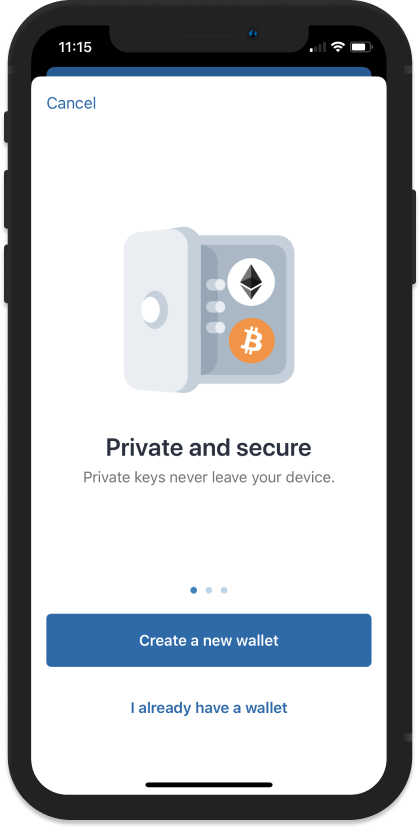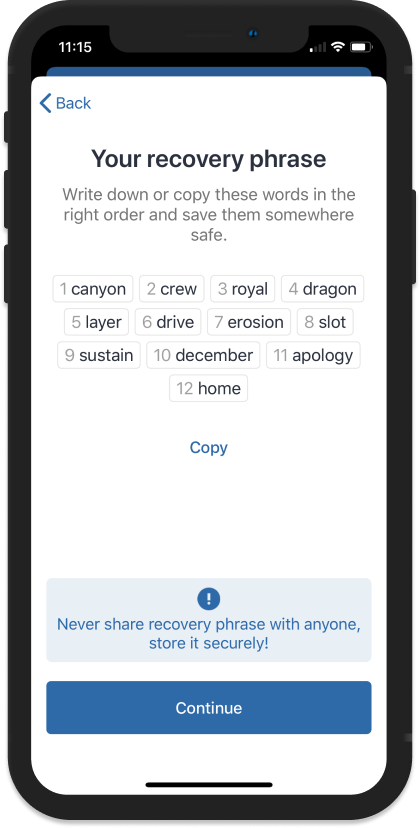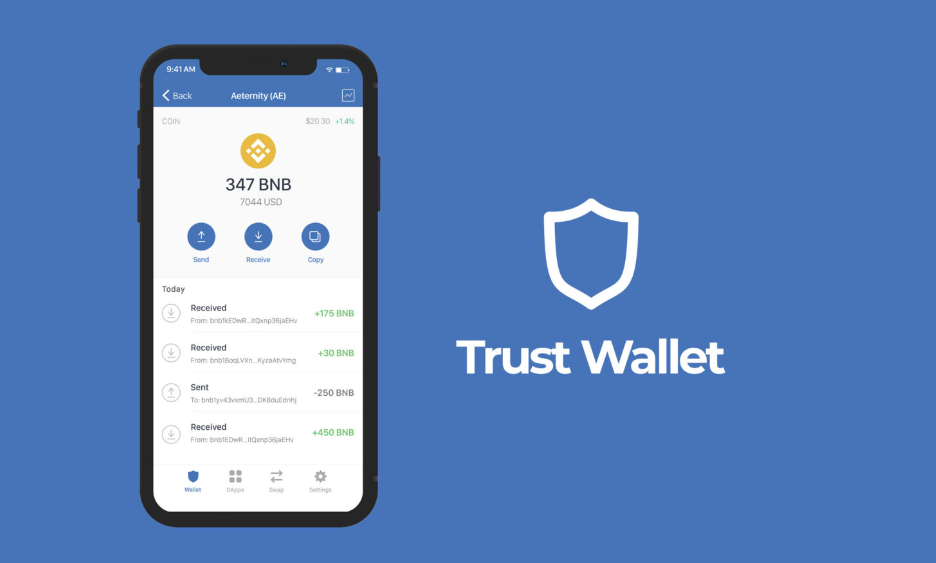A secure cryptocurrency wallet is crucial for those who invest in the growing cryptocurrency market. Technically, cryptocurrency wallets are software that allows users to send and receive digital currencies such as Bitcoin, Ethereum, Matic, and others. Cryptocurrency wallets are typically used to store multiple coins and tokens simultaneously. However, most wallets support a limited number of digital currencies. These wallets can take the form of a hardware device (e.g., a USB drive) that can be connected to the internet when needed or a digital storage (e.g., online application) that can be accessed on a device.
To ensure security, cryptocurrency wallets store codes known as private keys, which must match the public key before the wallet owner can send their assets. Trust Wallet is an example of such a wallet. It allows users to manage and access their digital assets and supports more cryptocurrencies than some of its competitors. Trust Wallet is also a non-custodial cryptocurrency wallet, meaning that users are the sole owners of their cryptocurrencies and have full control over their funds.
Contents:
- What is Trust Wallet?
- Key Features of Trust Wallet
- How Does Trust Wallet Work?
- What Can You Use a Cryptocurrency Wallet For?
- How to Use the Trust Wallet App?
- Advantages and Disadvantages of Trust Wallet
What is Trust Wallet?
Trust Wallet is a decentralized, non-custodial, multi-cryptocurrency wallet application that allows users to have full control over digital assets such as cryptocurrencies and NFT. Trust Wallet is the official cryptocurrency wallet of Binance and supports 65 blockchains and access to over 4,500 crypto assets.
Unlike most centralized wallets, Trust Wallet includes access to decentralized applications (DApps), providing users with the ability to securely interact with DApps on supported blockchains. Trust Wallet aims to make cryptocurrency more accessible to everyone by allowing users to buy, send, receive, stake, trade, and store cryptocurrencies.
Additionally, Trust Wallet is a hot wallet. As long as there is an internet connection, the wallet can be accessed through a secure internet connection. This contrasts with a cold wallet, which primarily remains offline and connects to the internet only when necessary.
Key Features of Trust Wallet
Some key features of Trust Wallet include:
- Multi-cryptocurrency support: As mentioned earlier, one of the key advantages of Trust Wallet is that it supports a wide range of cryptocurrencies, unlike most wallets that only support ERC-20 tokens.
- Flexible purchases: The wallet enables users to purchase cryptocurrencies from third-party platforms such as Wyre, MoonPay, Simplex, and others.
- NFT wallet: It is also an NFT wallet, meaning that users can buy, sell, and store NFTs. Users can also trade NFTs from their mobile devices through the Trust Wallet app.
- Staking and rewards: Users can use Trust Wallet for staking selected cryptocurrencies and earning rewards.
- Easy wallet import: Users can transfer cryptocurrencies from other wallets into Trust Wallet using a recovery phrase, private key, or Keystore file.
- Flexible fees: Trust Wallet is free to use without any subscription fee. It does not charge fees for swaps or in-app transactions. However, users will need to pay the respective network fees, which can vary depending on the chosen blockchain.
How Does Trust Wallet Work?
Trust Wallet, being a hot wallet, acts as a bridge between blockchains and their corresponding nodes. Each blockchain has its set of public addresses where cryptocurrencies are encrypted and securely stored. As it is decentralized and non-custodial, it does not store or control users' cryptocurrencies; it simply provides access to them.
The Trust Wallet application operates on mobile devices and through a browser extension. This makes every supported blockchain easily accessible once the user downloads the app on their Android or iOS device. The application does not store any user information to ensure privacy. All contact information is only kept between the transacting parties - Trust Wallet does not disclose user information to third parties.
Its built-in DApp browser allows users to access DApps based on Ethereum, BNB Chain, and others. Users can directly use these DApps through the Trust Wallet app, without the need for registration in each DApp. Additionally, Trust Wallet verifies all available DApps to ensure that only reliable ones are accessible to its users. Supported DApps include Uniswap, PancakeSwap, and OpenSea.
What Can You Use a Cryptocurrency Wallet For?
A cryptocurrency wallet like Trust Wallet can be used in various ways. In addition to storing cryptocurrencies, users can do a variety of things.
Here are some of the key capabilities of Trust Wallet:
| Name | Description |
|---|---|
| Buying Cryptocurrencies | Users can purchase over 60 cryptocurrencies with fiat money using credit or debit cards. They can also buy cryptocurrencies directly on centralized exchanges to reduce card fees. |
| Cryptocurrency Staking | Users can stake their cryptocurrencies through Trust Wallet and earn interest on their investments. The app offers various staking options, including BNB (BNB) and Kava (KAVA). |
| Cryptocurrency Exchange | The wallet has a built-in decentralized exchange (DEX) that allows users to perform cross-chain swaps. For example, one can exchange BEP-2 tokens for BEP-20 tokens. Network fees may apply depending on the activity of the respective network. |
| Support for Stablecoins and NFTs | Trust Wallet enables users to store stablecoins and spend them in a secure in-app environment. Additionally, users can manage their NFTs and gaming assets on Trust Wallet, as the app fully supports Ethereum and BNB Chain NFTs. |
How to Use the Trust Wallet App?
Before creating an account, users need to download and install Trust Wallet on their mobile devices. The app is available for free download on Android and iOS.
Next, follow these three simple steps:
Step 1. Creating a Trust Wallet Account: After installing the app, simply select "Create a new wallet" and review the Privacy Policy and Terms of Service. Tap "Accept" if you agree, then "Continue". Users will be prompted to create a six-digit password, which will serve as the secret security code to access the wallet. This code should be kept secure and never shared with anyone else.

Step 2. Backing Up the Wallet: The wallet must then be backed up to ensure its recovery if the mobile device it is on is lost or compromised. This is a critical step that every user should complete. Trust Wallet cannot assist in recovering a lost or stolen wallet since they do not have access to user data.

Step 3. Adding funds to your Trust Wallet account: Select the coin or token to purchase from the "Buy" menu on the wallet's main screen. The user will then be connected to a third-party provider. Check the fees associated with the transaction; these purchases are made with fiat money, so the preferred payment method needs to be set up before making a purchase. Click "Confirm" and wait for the funds to be deposited to the designated wallet address.
Advantages and Disadvantages of Trust Wallet
In addition to the advantages and key features mentioned earlier, one of the most significant advantages of the app is its user-friendly interface, which allows even novice users to easily navigate and use the app.
The Trust Wallet team aims to provide people with the best access to cryptocurrencies in a secure, non-custodial form, and therefore the app has extensive functionality. It allows users to perform various actions.
However, there are also some disadvantages. One of them is limited customer support service, as the team is available only via email. The app currently does not support hardware wallets for offline storage, although Trust Wallet claims that it is part of its intended future developments.






